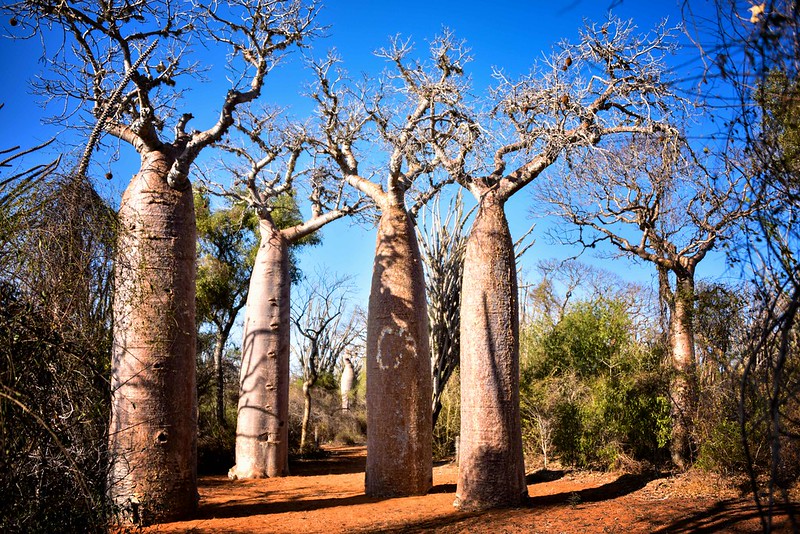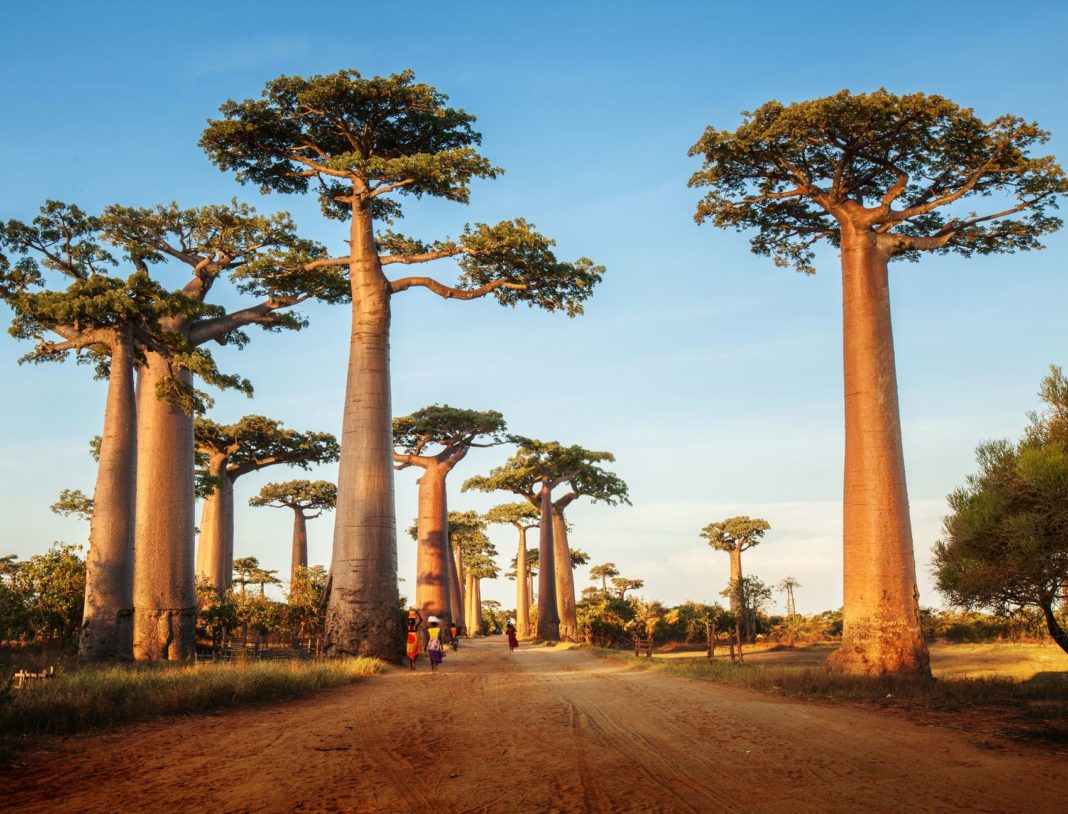Baobabs belong among the most remarkable trees in the world, and many African cultures consider them sacred. The trees are giants both in size and age. They can live for more than 2000 years, but now they are facing the greatest threat in their lifetime and mass extinction due to climate change and human development. According to studies, 9 of the 13 baobab trees are dying or recently died. The saddest irony is that Africa produces almost no greenhouse gases, and, thus, its nature suffers for environmental crimes of foreign countries.
There are nine species of baobab trees. Eight of them come from Africa and one from Australia. Two of the African species also grow on the Arabian Peninsula, and six African species can only be found in Madagascar.

The most endangered baobabs
Madagascar is a sad example of how human intervention can destroy nature that has evolved over millions of years. The giant baobab tree Adansonia grandidieri grows there and can reach a height of 30 meters. It is the most famous baobab tree in Madagascar. The most precious baobab trees in Madagascar comprise Adansonia perrieri and A. Suarezensis. All three of these species are listed as endangered on the IUCN Red List. The study suggests that two of the species should now be reclassified as critically endangered. Many baobabs disappear due to the development of agriculture, others due to drought and loss of animals responsible for the seed distribution, especially turtles and large birds. According to the study, A. Perrieri is currently the most endangered species; field observation has revealed that there are only the last 99 trees.
There are around 15,000 trees of the second most endangered species, A. Suarezensis, but its distribution area is much smaller, covering only 460 square miles. Due to the shrinking area, it could be extinct by 2080.

There are around 1 million A. grandidieri trees – the giant baobab tree, and although it may seem to be sufficient number, scientists are already recommending that the species should be classified as an endangered species.
The significance of baobabs
Baobabs are essential not only for the ecosystem and many animals but also for humans. The loss of baobabs trees vitally endangers many villages, which have always been a dependent of the trees as an essential source of water and food. Some baobabs also serve as dwellings and places of social gatherings.
Baobab leaves
The leaves are edible, containing a lot of calcium and proteins that can be well absorbed. They are also used in traditional medicine to treat infectious diseases. Also, baobab fruits are essential as they contain seeds and very nutritious pulp. Bark and seeds are used to treat almost all diseases, including malaria, tuberculosis, fever, microbial infections, diarrhoea, anaemia, toothache, and dysentery. Leaves and fruit pulp are used to reduce fever and stimulate the immune system.

Baobab fruit
The baobab fruits mentioned above are of great importance. They contain pulp and seeds. The seeds are usually removed, and the pulp is used for the production of baobab powder, which is imported to countries where baobab trees do not grow. It has a lemon flavour and can be added to food and drinks as it is a significant source of essential nutrients.
The pulp is high in vitamin C, antioxidants and several key minerals like potassium, magnesium, iron and zinc. The seeds and kernel of the plant are loaded with fiber, fat and micronutrients like thiamine, calcium and iron. A teaspoon of baobab powder, weighing around 4.4 grams, contains 10 calories, 3 g of carbohydrate (of which 1 g is sugar), 2 g of fiber, 136.4 milligrams (mg) of vitamin C, 0.352 mg of thiamin, 0.227 mg of vitamin B6 and 10 mg of calcium.
Source: therevelator.org/climate-change-baobab/, awkwardbotany.com, medicalnewstoday.com
Credit: Depositphotos, wikipedia, flickr.com















